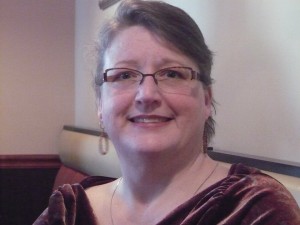Seasonal Affective Disorder SAD and Psychotherapy
By Gail-Elaine Tinker M.S., LPC
If you are feeling sluggish during the winter and are diagnosed with depression, it might be wise to check to see if your depression is impacted by the seasons. SAD is considered a subset mood disorder for people who feel OK most of the year and the have depressive symptoms at the same time of year, usually every year. In the winter, which is when most SAD expresses itself, you may feel like sleeping too much and dragging your feet in low energy and motivation. Some people experience this in the summer months, and can include the depressive aspects, anxiety, and even a sense of hyper-energy. This condition was skeptically researched by experts who now recognize SAD as a disorder. Your family doctor or a licensed professional counselor can diagnose SAD.
The chief aspect of SAD is that your mood and behaviors shift along with the calendar. It is far more than the ‘winter blues,’ that many people have after daylight savings time changes. It is more a condition of severe, dysfunctional depression (and possible mania, for Bi-Polar). For some people, waiting for the SAD symptoms to change when a new season arrives is enough, but others require specific treatments. The suggested treatments can be used alone or in combination.
Sometimes it might take a while to diagnose with SAD because it can mimic other conditions such as fibromyalgia, chronic fatigue, underactive thyroid, mononucleosis, sleep disorder, and different types of depression. SAD can even exacerbate Bi-Polar disorder at any time of the year.
Listed are 8 treatments most recommended for SAD:
- Light or phototherapy – can be the best help for Seasonal Affective Disorder, even if the FDA doesn’t officially approve the technique. One sits in front a light box or lamp which puts out 10,000 lux of florescent light, which is 20 times brighter than indoor light. Experts believe that the light helps you make more serotonin, the natural hormone which influences mood. Please let your doctor know if you have pre-existing eye conditions. It takes around 2 weeks of daily use to see mood improvements. The light works by getting into your pupils from a 14” distance, but no need to stare into it, most people read, work on a craft, chop vegetables, fold clothes, or a calm activity. In some people, there may be temporary headaches or nausea, which should pass over the initial 2 weeks.
- Medications – are often suggested by physical health providers, which include antidepressants. These meds are FDA approved to treat SAD. Your doctor should make you aware of side effects at the time of prescription. Medications generally take 2 weeks to begin working. Some people go off the medication during their ‘good’ time and go back on 2 weeks before the ‘bad’ time of year resumes.
- Talk Therapy or Psychotherapy – provides another form of relief to SAD symptoms. Cognitive Behavioral Therapy CBT can provide insights into beliefs, behaviors, and family response to your symptoms. CBT can help you manage stress, change negative thinking, and develop new ways to bring yourself positive behaviors when you experience your symptoms the most therapy simply reduces stress and teaches better coping skills. Many therapist incorporate Mindfulness techniques to their practice, which improved depression and SAD.
- Vitamin D – when medically tested, it has been found that many SAD sufferers have a low level of this important vitamin, which is developed by sunlight. Supplements of Vit D are inexpensive and might help ease symptoms; however, there are no definitive studies on this treatment. Vit D is found over -the-counter and there are nearly no side effects known in a daily supplement (except in overdose). Ask your doctor or pharmacist about the correct dosage.
- Sun exposure – is another easy way to combat SAD symptoms. Go outside or sit by a window when the sun is out. The sun is your natural light box and many of us who work indoors could do with some sunshine. Of course, long term sun exposure can raise risk toward skin cancer, so speak with your doctor about this method.
- Physical activity – can boost your mood and relief stress. You don’t need to become a gym rat; 30 minutes of mild exercise, three times per week can be enough to improve your mood (and your physical health). Walking at your lunch break everyday can be highly effective in adding sunlight (even on cloudy days) and activity to your life.
- Take a vacation – many people cope with SAD by scheduling a vacation. If you have winter mood changes, a 2 week trip to a southern local, can be just what the doctor ordered. If you have summer SAD, go north and stay in the cool, dark woods for relief.
- Sleep well – experts say to get no more than 9 hours per night and no less than 7. Reduce napping during the day, no matter how fatigued you feel. Maintaining sleep hygiene and healthy ritual before bed improves the quality of sleep. This step is not to be underestimated for effectiveness
Seasonal Affective Disorder SAD can impact the life of someone who has a mood disorder, mental health disorder, or just plain average folk. The condition of impairment of life function delineates it from those who feel the ‘winter blues.’ Use sum or all of these techniques to reduce the effects of SAD. Below are a few resources where one can order a light box.
www.amazon.com/furniture-decor
Gail-Elaine Tinker MS, LPC is a licensed psychotherapist in private practice in Bethlehem, PA. She sees many clients with mood and physical disorders. She offers traditional psychological therapies as well as hypnotherapy to treat aspects of SAD. For direct contact to schedule an appointment call 610-216-4319 or email gailelainetinker@yahoo.com


